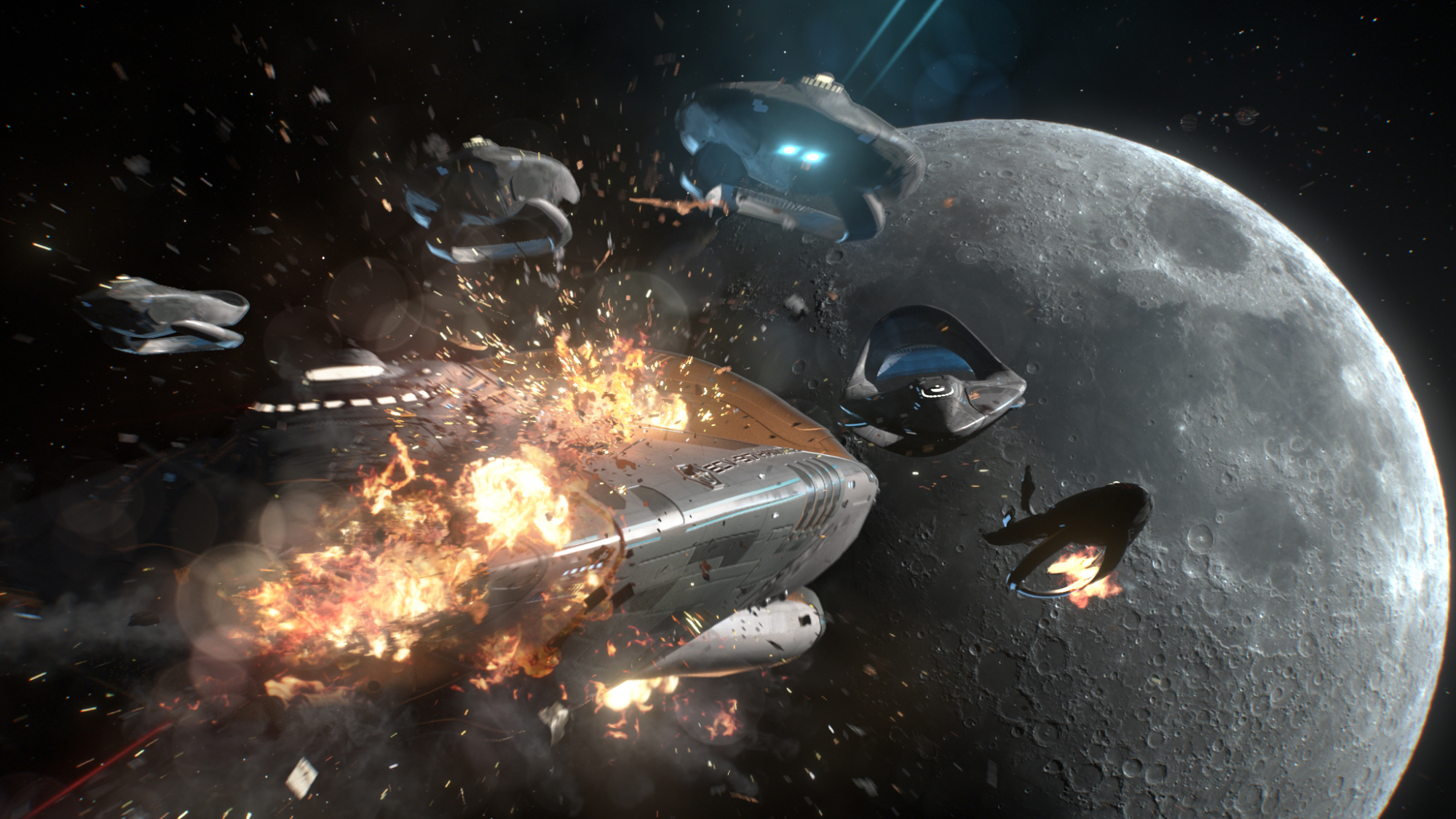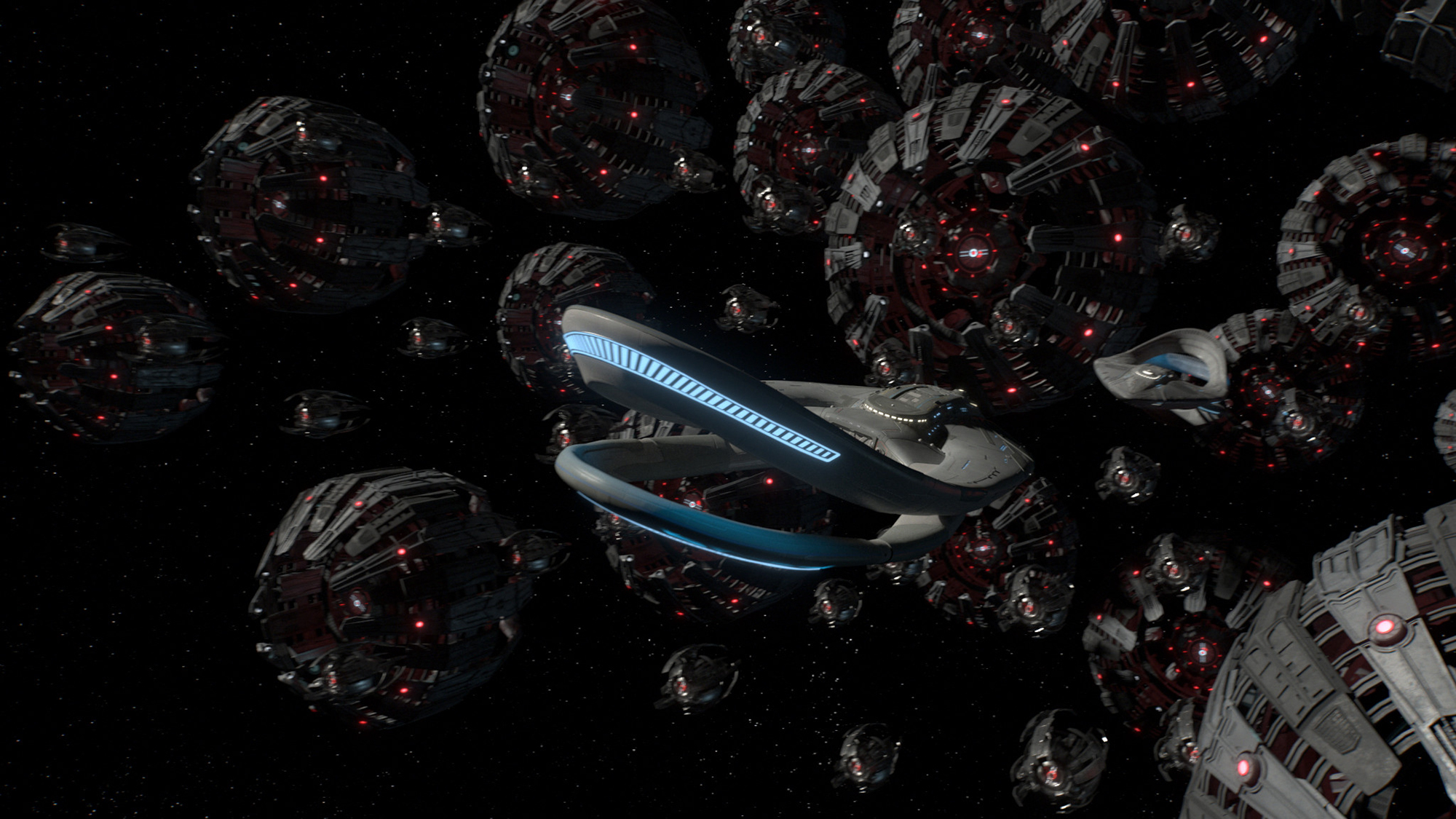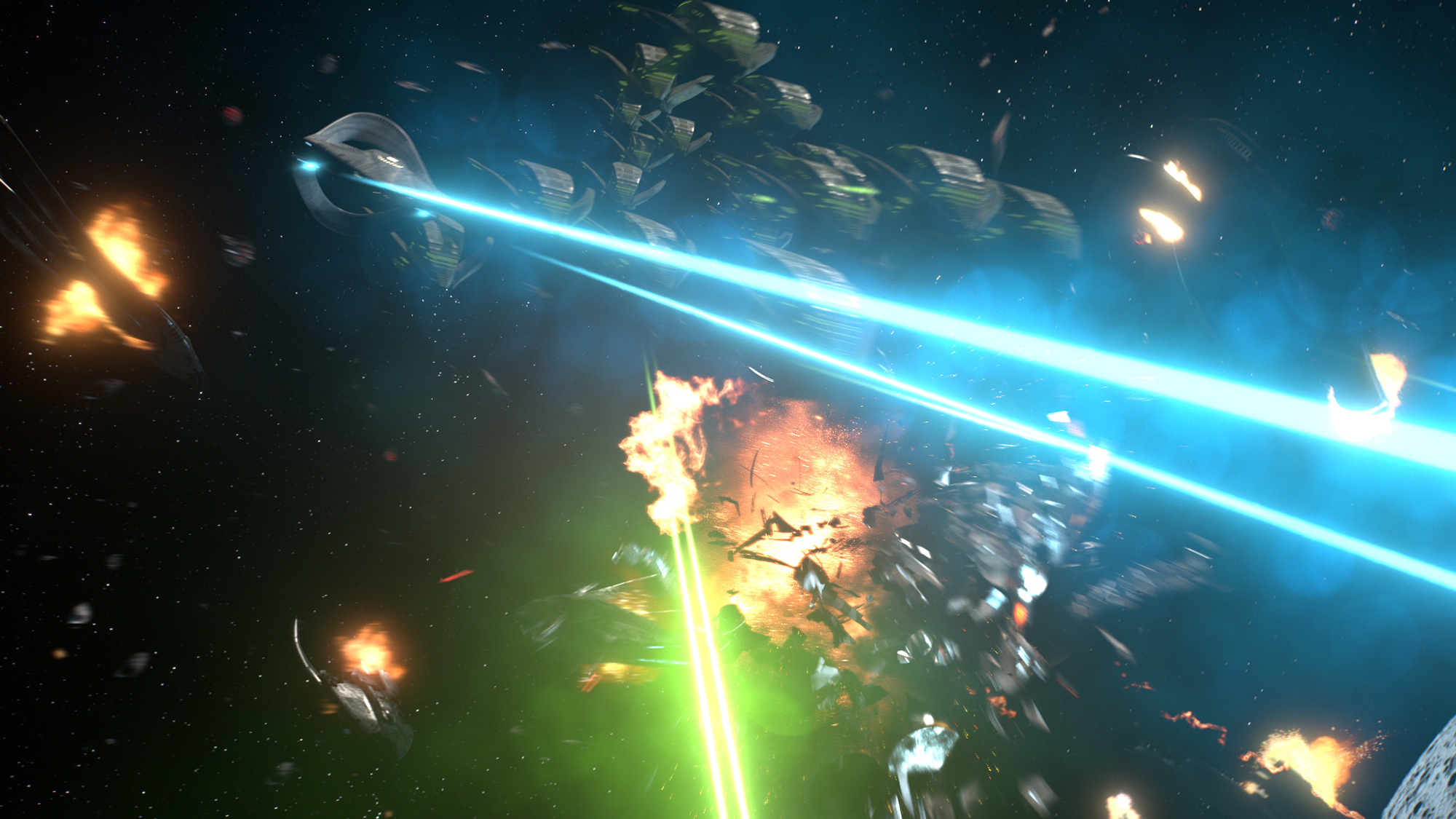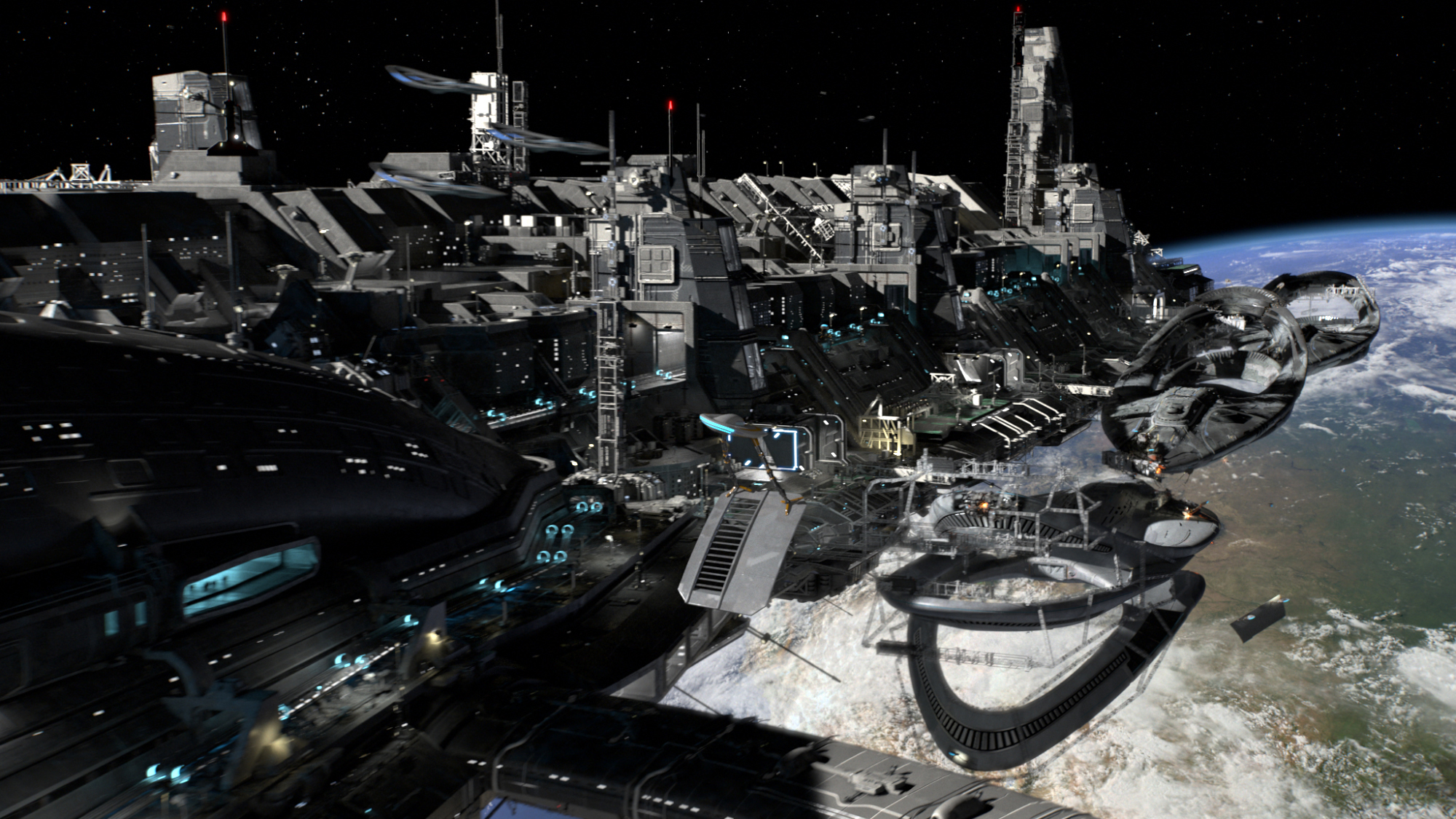Inside That Spectacular Space Battle in 'The Orville' (Video)
Science-fiction stories often include a big battle in space — at their best, they provide both a breathtaking visual spectacle and a tense finale as the powers of good and evil fight for supremacy.
Naturally, it has taken time for visual-effects technology to be able to re-create on screen what we might imagine in our minds when reading a particularly gripping novel.
Science fiction often required a larger budget than any other genre, calling for screen-ready models and spacecraft interiors. The early attempts usually involved a lot of sparks and smoke, back when Buster Crabbe played Flash Gordon in the black-and-white serial films shown on Saturday mornings in the late 1930s. The best sci-fi for the next few decades focused much more on drama than comedy, like "The Day The Earth Stood Still," "Forbidden Planet" and "2001."
Related: Why Do We Love Space Movies?

"Star Trek: The Original Series" tapped into the idea with the notion of one starship battling another, the best example of which was the episode "Balance of Terror" (S01, E14).
Then "Star Wars" came along and changed everything. Not only did we get to see an Imperial Star Destroyer disable and capture a Rebel Alliance Blockade Runner within the first minute, but it also took everything that made an aerial dogfight exciting and put it into space. Six years later, "Return of the Jedi" raised the bar even higher.
By this point, practical visual effects had more or less reached their limits and computer- generated technology was rapidly developing. Early attempts like the vastly underrated "The Last Starfighter" look primitive by today's standards, and a number of enthralling battles in space took place throughout the run of "Babylon 5" and the latter half of "Star Trek: Deep Space Nine," both which used the best CGI available at the time.
Get the Space.com Newsletter
Breaking space news, the latest updates on rocket launches, skywatching events and more!
"The Phantom Menace" showed us how far the technology had come; it also showed us that an unlimited VFX budget doesn't always guarantee a good space battle.
Last week's episode of "The Orville" included one of the longest space battle sequences seen in contemporary sci-fi, at just under 8 minutes, and it ticked all the right boxes. Not only did it provide a thrilling climax to an already enthralling two-part episode, but the visual effects were flawless.

The USS Orville emerges out of quantum drive with Earth directly ahead and the entire fleet of deadly Kaylon death spheres in tow. Closer inspection reveals hundreds of Planetary Union ships gathered in a desperate attempt to save the planet. It's a little like the Battle of Sector 001 in "Star Trek: First Contact," only this is on a much bigger scale.
Almost immediately the firing starts: A barrage of laser blasts fills the screen. Straight away, the Planetary Union suffers casualties as the more advanced Kaylon weapons tear through the defending Union ships. Cruisers are exploding in huge balls of fire and debris is scattered everywhere. Each Union ship that's destroyed means the death of hundreds of crewmen, but those are the stakes of this fight: If Earth is destroyed, then billions will perish.
Even the Orville doesn't escape damage. The ship takes a bad hit, breaching the hull and causing crewmembers to be blown out into the vacuum of space. Some of the Kaylon death spheres are destroyed, but it's not enough and they continue to advance toward Earth. If the battle continues this way, all hope is lost. And just when it seems that's the way it's going to go, a fleet of Krill warships drop out of quantum drive and join the fight.
It's an edge-of-seat, roller-coaster ride that sets a new bar for any future sci-fi series or movie.
Related: Best Sci-Fi TV Shows on Netflix
"Our biggest achievement was keeping up with the pace. The show is fluid, and we adapt, more importantly, we are nimble enough to keep up with the show's needs," Tommy Tran, the sequence's VFX supervisor, said in a statement from FuseFX, the principal team behind the space battle sequence.
"It's an incredibly fun new challenge every week, but this was a truly epic battle — one that rivals anything you may see in any epic space saga," he added. "When you're talking of creating a space odyssey, you know what you're up against and what it's going to be compared to, so we knew we needed to raise the bar. After hours of hard work, lots of coffee and an amazing team rallying, we put together what I would argue is the ambitious and visually stunning space battle ever made for commercial television."

"The scope of this season is enormous. It's very challenging work, but this type of show is exactly why we're in this industry. Episode 9 has what I believe is the largest and most complex space battle visuals ever depicted on television," Melissa DeLong, a VFX producer, said in the statement.
"For television, the most comparable space battles were from 'Star Trek: Deep Space Nine' and the Dominion War," Tran told Space.com in an email. "The technology to realize large-scale space battles was limited in the '90s, but they were well executed and the overall battles were similar – the Federation taking on a vastly superior enemy, who are only beaten because long-time foes decide to work together against the common threat."
"From the feature film world, 'Star Wars Episode III' and 'Rogue One' were the high bars we tried to meet in terms of technical complexity and visual fidelity," he added.
Remarkably, FuseFX managed to put the whole sequence together in just two months.
"We even developed a series of in-house tools to automate many processes that would otherwise have created roadblocks to delivering work on time. This allowed us to deliver just over 200 shots of a masterful battle scene in eight weeks on time and on budget, which was no small feat," DFX supervisor Matt Von Brock said in the statement.

Of course, more often than not, many of the laws of physics take a back seat in fast-moving, adrenalin-fueled space battle sequences. But there were still some laws the team had to follow.
"To avoid absurdity in a big sci-fi battle like this, it's important to adhere to the rules of that fictional universe," Tran told Space.com.
"The movement and actions of each ship in the space battle were defined mostly by previous episodes, and the ships we hadn't seen before had to more or less play by the same rules. Even though the show is science fiction, fans would notice if the rules of the show's universe were broken."
Season 2 of "The Orville" is on Thursdays at 9 p.m. ET on Fox in the U.S. It can be watched on demand on Fox Now and Hulu. It's also available on Fox.com in the U.S. In the U.K., it's on Thursdays at 9 p.m. GMT on Fox. The first season of "The Orville" is available to buy on DVD and a season pass can also be purchased from Amazon.
- 'The Orville' Gives Us an Action-Packed Conclusion in 'Identity, Part II'
- An Emotional Performance from Lt. Keyali Steals the Show in 'The Orville' Episode 'Deflectors'
- UFO Battles Captured on Video? Not Likely, Expert Says
Follow Scott Snowden on Twitter. Follow us on Twitter @Spacedotcom and on Facebook.
Join our Space Forums to keep talking space on the latest missions, night sky and more! And if you have a news tip, correction or comment, let us know at: community@space.com.
When Scott's application to the NASA astronaut training program was turned down, he was naturally upset...as any 6-year-old boy would be. He chose instead to write as much as he possibly could about science, technology and space exploration. He graduated from The University of Coventry and received his training on Fleet Street in London. He still hopes to be the first journalist in space.










